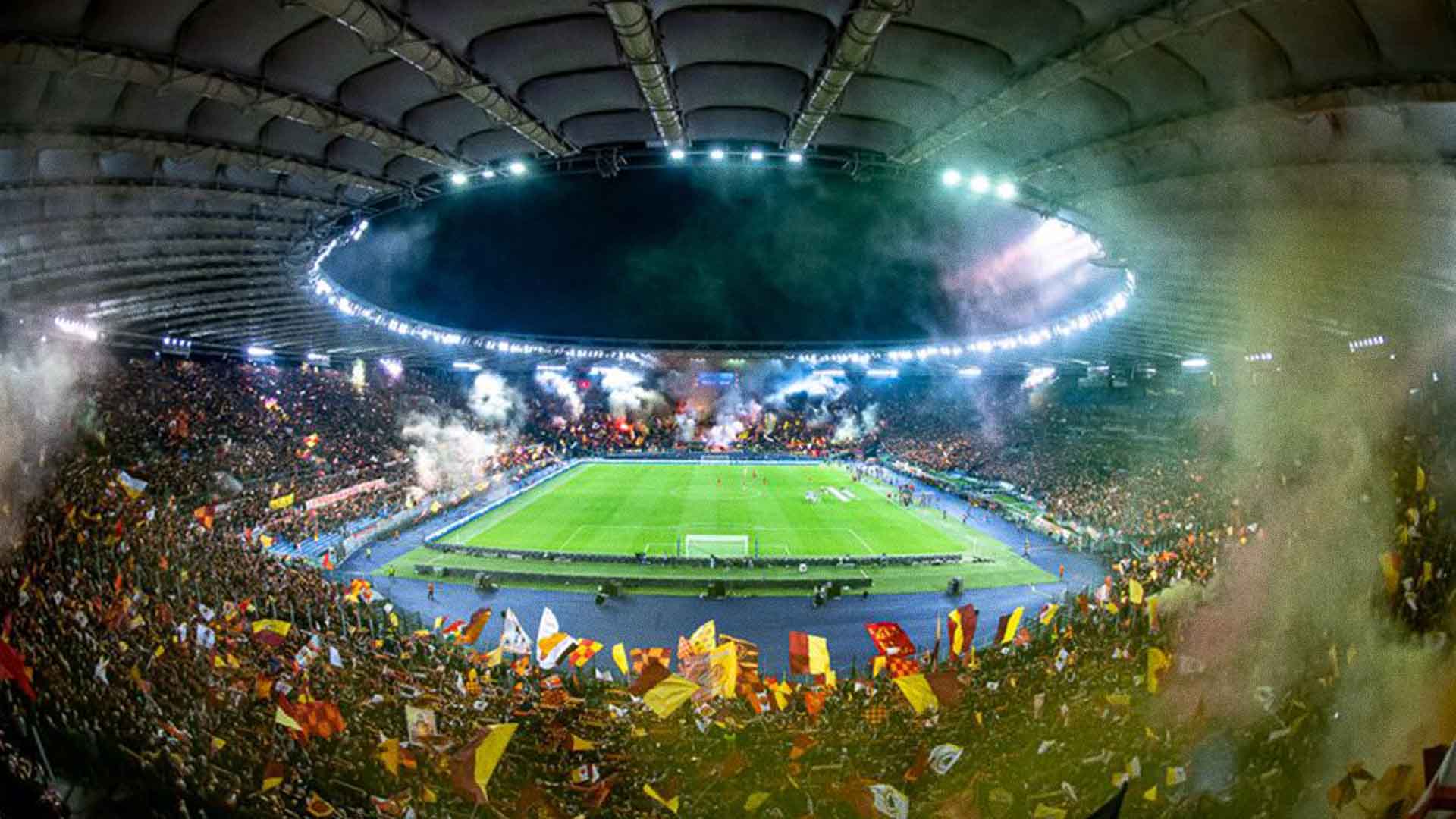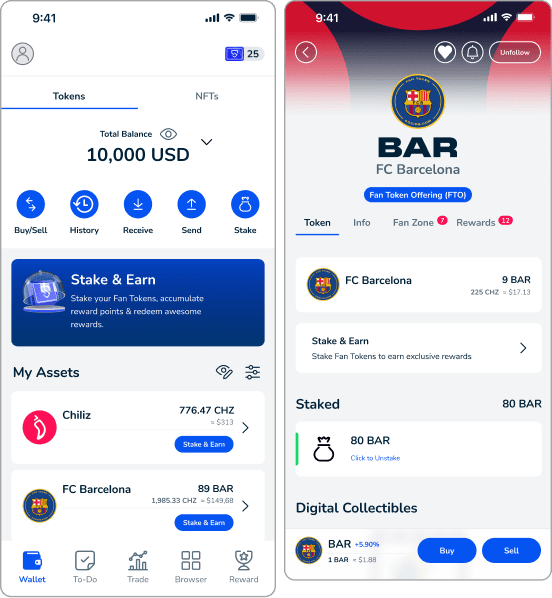Stadio Olimpico History – A Journey Through Time
“Roma have risen from their ruins… Manolas the Greek God in Rome. The unthinkable unfolds before our eyes.”
The immortal words of Peter Drury, in the aftermath of Roma completing their three-goal deficit comeback over Barcelona in the second leg of the Champions League quarter-finals in 2018, continue to echo, reverberate and bounce around the walls of the Stadio Olimpico. But in truth, the Roma stadium has been a theatre for drama of the highest level since it was first opened to the public in 1953.
Below, we analyse its importance to the people of Rome, why it remains one of Europe’s most important stadiums, and how Roma’s relationship with Socios.com can turbocharge the match-going experience.
Stadio Olimpico Renovation – Shaping the Modern Jewel
There have been several stages to the development of the Stadio Olimpico.
- It was first designed by Enrico Del Debbio, and work began in 1927 before construction was halted in the build-up to the second world war. During the war, the old Roma stadium was used as a parking lot by allied soldiers.
- Construction continued in 1950 before it was completed in 1953. The new stadium capacity reached 100,000 – an incredible number for that period of time – and was opened with a friendly match between Italy and Hungary.
- In 1960, the Roma stadium capacity was lowered and standards were improved after the city was awarded the 17th Olympic Games. It is here that the name of Roma Stadium was changed to the Stadio Olimpico.
- It wasn’t until 1990 when the structure received another makeover, this time to accommodate the 1990 FIFA World Cup.
- In 2007, work was undertaken to bring the venue up to UEFA standards. It was rated a UEFA category four stadium and is able to host major UEFA finals and international events.
It is renowned for the running track around the outside of the pitch and its distinctive oval shape. For a more comprehensive understanding of the Stadio Olimpico, we would recommend a Roma stadium tour – go into the bowels of the stadium for a thorough overview of its past, present, and future. There’s also the Roma stadium museum – a must-visit for football aficionados.
Stadio Olimpico Capacity – Roma’s Rampaging Fanbase
Such is the veracity of the Roma support, match-going supporters are in danger of spending too much time soaking in the atmosphere rather than watching the game.
A sea of I Giallorossi (yellow and red) greets away teams and fans. The Roma tifosi – Italian word for fanbase – is ferocious, whipping up incredible atmospheres and creating decibel-demolishing records with every passing game.
To visit Roma Stadium is a must-do for any football-loving fan.
Where is Stadio Olimpico? – Navigating the Heart of Turin
The AS Roma Stadio Olimpico is located in the northern part of Rome. It is situated on the west bank of the Tiber River and is surrounded by a beautiful green park called Foro Italico.
It is easily accessible via public transportation, with the closest metro station being Lepanto, which is just a short walk from the stadium. Additionally, there are several bus lines that stop near the stadium, providing easy access for those coming from different parts of the city.
The stadium also has ample parking spaces available for those who prefer to drive to the venue.
Matchday Traditions – Creating Memories at Stadio Olimpico
One of the great historical conventions of a game at Roma’s home stadium is the unfurling of flags outside and inside the stadium.
The Tifosi has come up with some innovative, attention-grabbing artwork that adorns canvases hung from the terraces and throughout the stadium.
The most iconic is the team’s emblem, which features a female wolf with the two infant brothers Romulus and Remus – a nod to the founding of this famous city. But there are plenty of other works – all of which tend to be created under the famous yellow and red colour scheme so associated with the club.
Socios.com and AS Roma Fan Tokens – The Fan’s Voice
Fan engagement is a crucial aspect of any sports team, and AS Roma takes it to the next level with their innovative initiatives. One such initiative is the availability of AS Roma Fan Tokens on Socios.com.
These Fan Tokens allow fans to have a say in club decisions through online polls and surveys. This not only gives them a sense of empowerment but also enhances their connection with the club and Stadio Olimpico.
But how exactly do these Fan Tokens work? Well, fans can purchase these tokens on Socios.com, a blockchain-based platform for fan engagement. Once they have the tokens, fans can participate in various polls and surveys to make their voices heard. The more tokens a fan has, the more weight their vote carries in decision-making processes.






